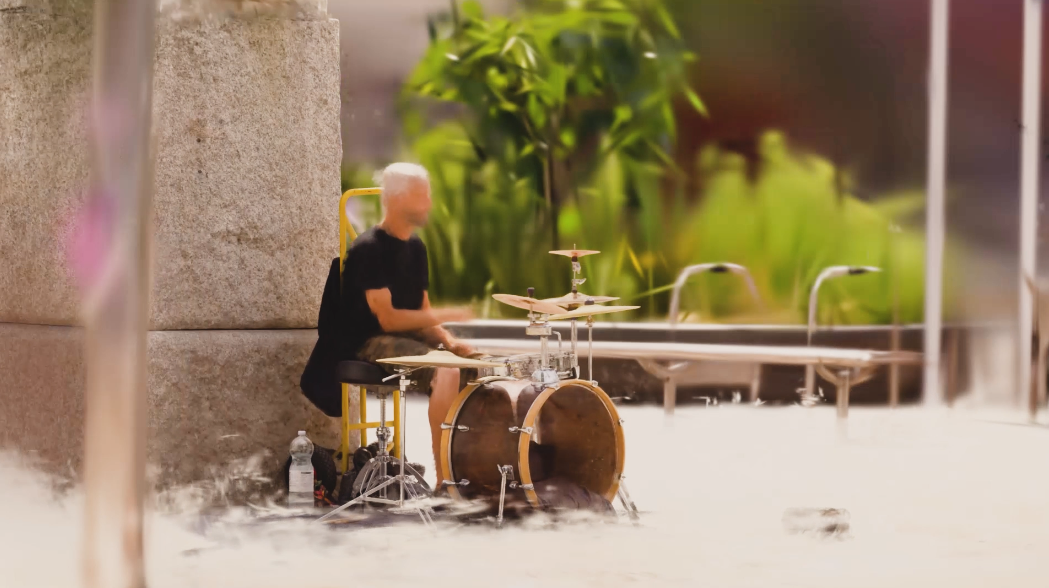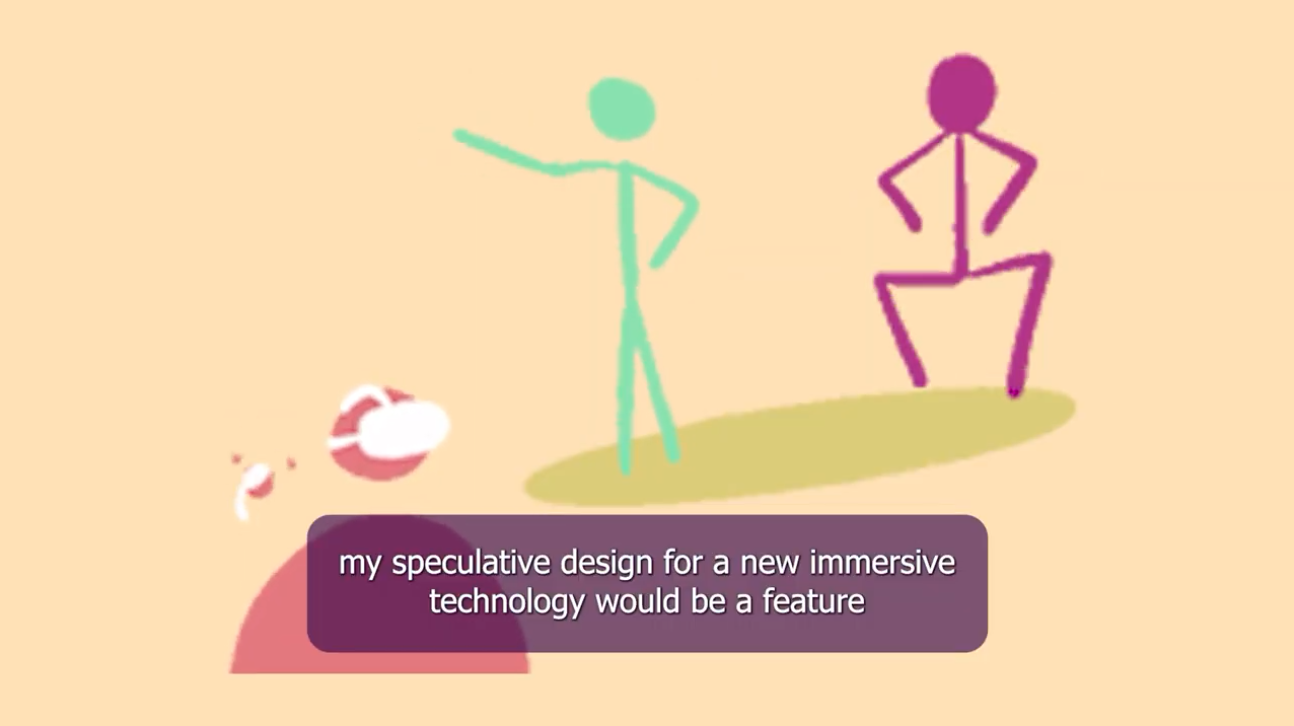#08
︎︎︎ 04.08.2025
︎︎︎ 04.08.2025
Splatting Again
Tags: splats, technology, art
After a short break,
I’m back at it, Splatting for fun.
Last week while out and about in Bristol, I walked past an excellent drummer by the name of Dave Greenwood (Sorry I couldn’t remember if you said Dave or David). I walked a short way past him before wondering if he’d let me capture him in “a kind of temporal digitial sculpture”.
I got my camera out, asked him and he said “Okay”.
It was a sweltering afternoon and Dave was casually hitting out some classy beats as I somewhat awkwardly span around him capturing as much of the spectacle as I could. Most importantly, I captured the sound of his drumming as well, so was able to produce quite a cool little looping record of Dave.
I am fascinated by the notion of forcing machine learning to reconcile moving objects within otherwise static splats (like a drummer).
I love the imperfections of this kind of 3D capture, they seem more acceptable than the artifacts of photogrammetry, even artistic like Van Gogh or Monet choosing to paint how they felt rather than exactly what they saw.
Not that I’m equating my work to theirs...
Here’s the scene
(via Blurry)And
Here’s a short cut
(via youtube)Big thank you to Dave who was keen for me to do this in the first place, if you’re here Dave, say hello!


#07
︎︎︎ 16.02.2025
︎︎︎ 16.02.2025
Make Create Play
Make Create Play
with Caroline McGlone
Tags: technology, research, experience, education, play
Caroline McGlone is an increadibly determined and thoughtful accessible needs researcher.
She has created a couple of workshops centered on promoting more accessible design thinking for immersive experiences, along with Immersive & Design consultant Yan Soar and XR Creative Technologist Julia Ronneberger .
I’ve been able to assist the project in a few small ways that I’d like to share here.






I created a short animated introduction that explained the essance of why the particapnts of the workshop were present - to speculate on the potential new designs of immersive technology and technoques that could answer their access needs, in the context of play.
In the first of the two workshops, I did this talk on the fly and ended up rambling a bit due to a combination of social anxiety and not being prepared enough.
Creating this short intro solved both of those issues and I was able to contribute a valuable slice of insight that helped provoke discussion during the workshop.
Creating this short intro solved both of those issues and I was able to contribute a valuable slice of insight that helped provoke discussion during the workshop.
#06
︎︎︎ 01.01.2025
︎︎︎ 01.01.2025
Inspired by...
Oskar #1
Tags: philosophy, experience,
Last year in March, I lost a very good friend of mine called Oskar.
He was a great influence on me in my teens and early 20s, sharing with me his passions for VR, Sci-fi and RTS games. The kind of things which I’ve come to be hugely passionate about also, and even define who I am.
I hadn’t spoken to him in a while due to general life things for me and mental struggles for him, nonetheless his passing was a great loss for me and everyone who knew him.
After I spoke about his affect on me during his funeral, his parents wanted to thank me and we came to the agreement that a small camera would be an appropriate gift.

Myself and Os about 17 years ago
I had already a small digital camera that enabled a focus on the moment, mimicked the aesthetic and experience of old analogue film cameras but had the ability to capture hundreds of photos, but without the distraction of dslr features or phone apps.
I asked for a camera of the same kind but of a different colour (white).

The camera has the ability to have a ‘black and white’ filter loaded onto it, so I did that and named the camera The Oskar with the intention to use it to take pictures of quiet, contemplative or particular moments in my everyday experience.
Moments that not necessarily reminded me of Os, but helped me remember that essence of curiosity and creativity that he instilled in me.
It looks dirty at the moment because I foolishly attempted to pen over the 'Camp Snap' logo and then immediately thumbed the wet ink!
So every now and then, I will share a few pictures taken with that camera here, pictures and moments inspired by Oskar.
#06
︎︎︎ 14.11.2024
︎︎︎ 14.11.2024
Romans & Splats
Tags: experience, technology, art
I attended a technical demonstration yesterday called “ ONE WORD 5G? You're having a Bath.” which showed how “5G SA small cells can provide high capacity without being and environmental eyesore”.
Their main demonstration was hosting an AI driven AR Centurion companion in the Roman Baths, in Bath.

The demonstration was very impressive, so much so that it was almost benal.
The technology was so fast and seemless, I didn’t even notice it, it was a background process that I didn’t even think about, much like the millions of technical processes that go off without a hitch in our daily lives.
The Centurion AI Augmented Reality experience was developed by Richard and Adam from Rocketmakers and was itself very cool, albeit a bit talkative!
While I had the opportunty, I decided to try and capture the Romans Baths in Gaussian Splat format, which I trained today via the Jawset Postshot desktop app.
I am regularly amazed at the quality of Gaussian Splats these days, this one was made with only 170ish images, at night, moving people and water reflections
Below is a short video of the the scan with sound effects: